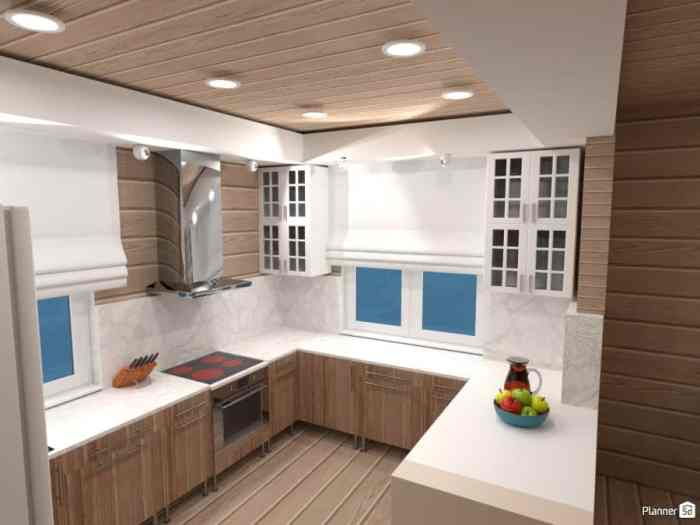3D Kitchen Design App A Comprehensive Review
3D kitchen design apps are transforming how homeowners visualize and create their dream kitchens. From simple room layouts to elaborate 3D renderings, these tools empower users to bring their kitchen visions to life before a single cabinet is installed. This review explores the current market landscape, analyzing user experience, key features, and the future of these innovative applications.
The market for 3D kitchen design apps is diverse, ranging from free, basic options to premium, feature-rich platforms. Understanding the nuances of these tools is crucial for homeowners seeking to optimize their kitchen design process and avoid costly mistakes.
3D Kitchen Design Apps: A Market Overview

The market for 3D kitchen design apps is experiencing robust growth, driven by the increasing demand for intuitive and comprehensive tools to visualize and plan kitchen renovations. Homeowners and designers alike are leveraging these apps to explore various design options, material choices, and appliance layouts before committing to costly physical alterations. This trend is likely to continue as more users embrace digital design tools for their home improvement projects.
Introduction to 3D Kitchen Design Apps
The current market offers a diverse range of 3D kitchen design apps, catering to varying needs and budgets. These apps span from basic free tools with limited functionalities to advanced paid platforms with extensive features. The availability of various options empowers users to select the most suitable app based on their specific requirements and budget constraints.
- Free vs. Paid Apps: Free apps often come with limited features, such as basic 2D floor plans and a restricted selection of cabinets and appliances. Paid apps, conversely, offer a wider range of customization options, including advanced 3D rendering, detailed material libraries, and comprehensive appliance catalogs.
- Basic vs. Advanced Features: Basic apps might focus primarily on 2D floor planning, while advanced apps provide detailed 3D modeling capabilities, allowing users to virtually place cabinets, appliances, and other elements within the kitchen space. Advanced apps typically also include options for realistic lighting, materials, and rendering.
- Key Benefits and Features: Common features across these apps include virtual kitchen layouts, customizable cabinet selections, appliance placement tools, and material selection options. Users can explore different design ideas and make informed decisions before committing to any physical changes.
| App Name | Pricing | Key Features | User Reviews |
|---|---|---|---|
| App A | Subscription-based, starting at $10/month | Detailed 3D modeling, extensive cabinet and appliance libraries, realistic rendering, material customization | Generally positive, users praise the app’s intuitive interface and comprehensive features. Some users report occasional glitches. |
| App B | One-time purchase of $49.99 | 2D and 3D layout tools, a smaller but well-curated selection of cabinets and appliances, room visualization | Positive feedback on the ease of use and the value for the price. Some users wish for more material options. |
| App C | Free with in-app purchases | Basic 2D and 3D planning tools, limited cabinet and appliance options, limited rendering capabilities | Mixed reviews; users appreciate the free nature but often find the lack of advanced features frustrating. |
User Experience and Interface
The user experience significantly impacts the adoption and satisfaction of 3D kitchen design apps. A well-designed interface facilitates intuitive navigation and exploration, enabling users to quickly visualize and modify their kitchen designs. Poorly designed interfaces can lead to frustration and hinder the design process.
- User-Friendly Interfaces: Effective apps employ intuitive navigation methods, allowing users to easily modify kitchen elements, adjust dimensions, and explore different configurations. Clear visual cues and well-organized menus enhance the user experience.
- Navigation and Interaction Design: Different apps utilize various navigation methods, such as drag-and-drop functionalities, interactive toolbars, and customizable views. The effectiveness of these methods varies depending on the app and the user’s familiarity with similar tools.
- Features Contributing to a Positive User Experience: Key features include intuitive drag-and-drop functionality for furniture placement, adjustable camera views, and customizable lighting options for accurate visualization.
- Intuitive and Less-Intuitive Interface Elements: Some apps provide clear visual feedback and clear instructions, while others may lack intuitive navigation or have confusing tool placements.
| App Name | Navigation Method | Effectiveness |
|---|---|---|
| App A | Drag-and-drop, interactive toolbars, adjustable camera views | Highly effective, facilitating rapid design modifications and detailed visualization |
| App B | Combination of drag-and-drop and menu-driven controls | Effective, offering flexibility while maintaining a clear structure |
Features and Functionality
Core functionalities of 3D kitchen design apps typically revolve around kitchen planning, material selection, and 3D visualization. These features enable users to explore various design concepts and fine-tune their kitchen layout before any physical changes.
- Core Functionalities: These apps generally support essential kitchen planning tasks, including cabinet selection, appliance placement, and material selection. They allow users to experiment with different layouts and configurations to achieve their desired design aesthetic.
- Kitchen Planning Features: These tools support detailed kitchen planning, allowing users to precisely position cabinets, appliances, and other elements. Users can also adjust dimensions and customize the layout.
- Advanced Features: Some apps include advanced features like room visualization, where the kitchen design is displayed within the context of the entire room, and 3D rendering, producing photorealistic images of the finished kitchen design.


